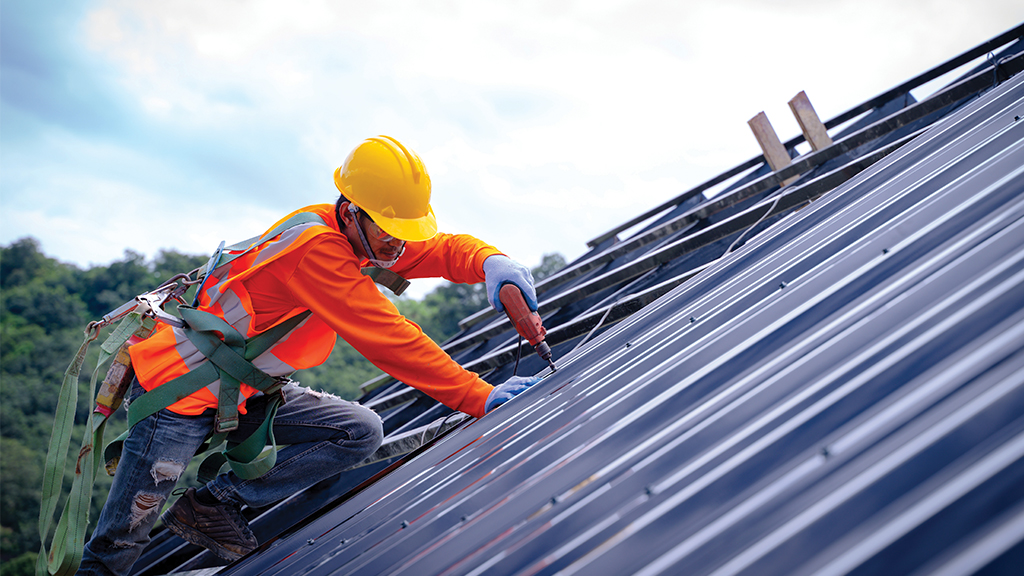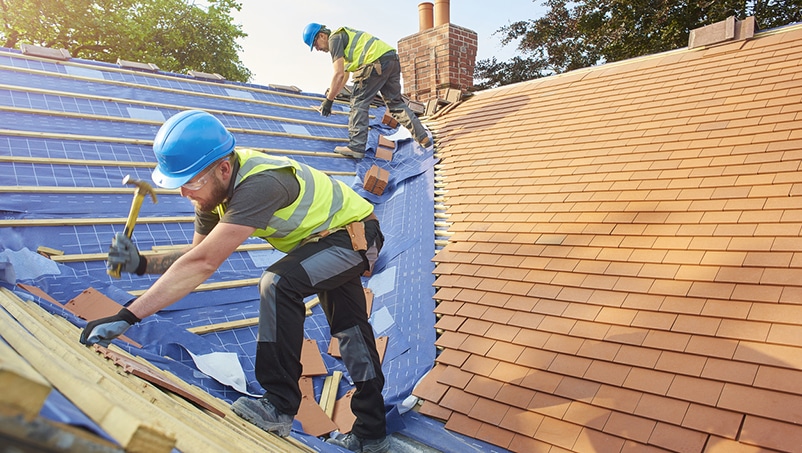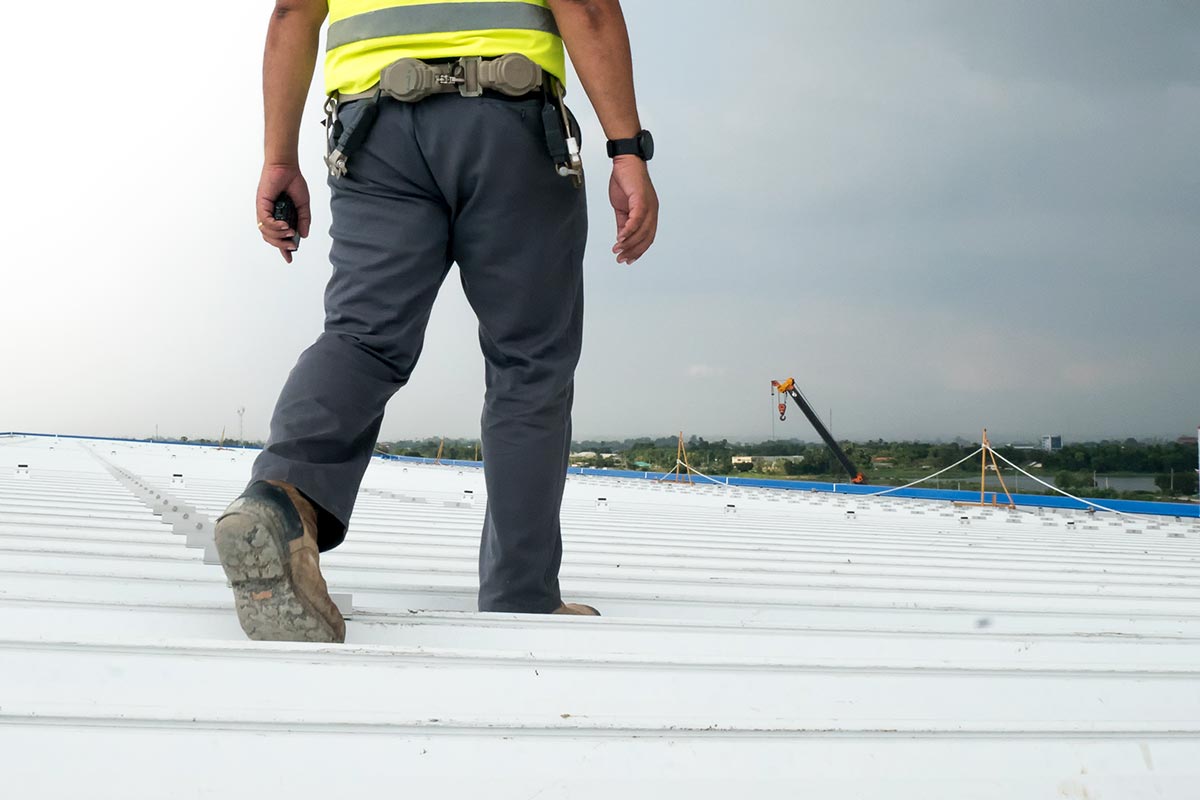Roof Repair vs. Roof Replacement: What’s the Difference?
The roof is a vital component of any building, providing shelter, protection, and aesthetic appeal. However, over time, roofs can deteriorate due to weather conditions, age, and wear and tear. When faced with roofing issues, homeowners are often confronted with the decision of whether to opt for roof repair or roof replacement. Both options have their advantages and considerations, and understanding the differences between the two can help homeowners make informed decisions.
Roof Repair vs. Roof Replacement: Understanding the Difference
The condition of a roof is crucial for the integrity and protection of a building. As roofs age and endure various weather conditions, they can develop issues that require attention. When faced with roofing problems, homeowners have two main options: roof repair and roof replacement. These options differ significantly in scope, cost, and outcomes. Understanding the differences between them can help homeowners make the right choice for their specific circumstances.
Roof Repair: Addressing Specific Issues

Roof repair involves fixing localized problems and damages without replacing the entire roof structure. It’s a targeted approach aimed at rectifying specific issues while preserving the majority of the existing roof. Here’s what distinguishes roof repair:
Scope
Roof repair focuses on fixing specific problems, such as leaks, damaged shingles, or minor punctures. It’s suitable when the issues are isolated and not indicative of widespread deterioration.
Cost
Repairs are generally more cost-effective than replacements. Since only the damaged areas are addressed, the expenses are lower compared to the extensive work involved in a full replacement.
Timeline
Roof repairs can be completed relatively quickly, depending on the extent of the damage. This means minimal disruption to your daily routine.
Purpose
Roof repairs are designed to extend the lifespan of your existing roof by resolving immediate issues. They’re ideal for situations where the overall roof structure is still in good condition.
Roof Replacement: Overhauling the Entire Roof

Roof replacement entails removing the existing roof entirely and installing a new one. It’s a comprehensive solution suitable for roofs with extensive damage, significant wear and tear, or age-related issues. Here’s what sets roof replacement apart:
Scope
Roof replacement involves a complete overhaul. The old roofing materials are removed, and a new roof is installed. It’s recommended when the existing roof is nearing the end of its lifespan or when multiple issues are present.
Cost
Roof replacements are more expensive than repairs due to the materials, labor, and time required for the entire replacement process.
Timeline
Replacing a roof is a more time-consuming endeavor compared to repairs. The project timeline can extend over several days, during which time your home might be exposed to the elements.
Purpose
Roof replacement is an opportunity to start anew with a fresh roof. It’s chosen when the existing roof has extensive damage, is nearing the end of its functional life, or when homeowners want to upgrade to more energy-efficient or aesthetically pleasing materials.
Roof Repair: When You Need It

Here are some common scenarios that warrant roof repair:
Leak Repair
If you notice water stains on your ceiling or walls, it’s a sign of a potential leak. Roof leaks can often be patched up without needing a complete replacement.
Damaged Shingles
Individual shingles that are cracked, curling, or missing can be replaced without necessitating a full roof replacement.
Minor Punctures
Small holes or punctures, often caused by falling debris, can be repaired to prevent water infiltration.
Flashing Repair
Damaged flashing around chimneys, vents, and skylights can be repaired to prevent leaks.
Localized Wear and Tear
Areas of the roof showing localized wear due to exposure to harsh weather can be fixed without replacing the entire roof.
The advantages of roof repair include cost-effectiveness and a shorter project timeline. Roof repairs are generally less expensive than replacements, making them a suitable option for homeowners on a budget. Additionally, if the issues are isolated, repairs can be completed relatively quickly, minimizing disruption to daily life.
Roof Replacement: When You Need It

Here are some scenarios that might call for a roof replacement:
Advanced Age
Most roofs have a limited lifespan, and if your roof is nearing 20-25 years of age, replacement might be necessary, even if no major issues are evident.
Widespread Damage
If a significant portion of the roof is damaged, such as multiple missing shingles or extensive water infiltration, a replacement might be the more practical long-term solution.
Structural Concerns
If the roof’s underlying structure is compromised, a replacement might be the only way to ensure the safety and stability of the building.
Energy Efficiency
Upgrading to more energy-efficient roofing materials as part of a replacement project can lead to long-term savings on energy bills.
While roof replacement requires a larger upfront investment and a longer project duration, it offers the benefit of a fresh start. A new roof provides improved protection, enhanced curb appeal, and the opportunity to incorporate modern roofing materials and technologies.
Steps to Choosing Between Roof Repair and Replacement

When it comes to determining whether you need roof repair or replacement, consulting with a professional roofing contractor is crucial. Their expertise can help assess the situation and recommend the most appropriate solution. Here are the steps you can expect to happen when choosing between roof repair or replacement:
Inspection
Have a professional roofing contractor inspect the roof to assess its condition and identify the extent of damage. Their expertise will provide a clearer picture of whether repair or replacement is necessary.
Cost Analysis
Compare the cost of repairs to the cost of a replacement. Consider long-term savings that a replacement might offer due to improved energy efficiency and reduced maintenance.
Age and Lifespan
Consider the age of the roof and its remaining lifespan. If the roof is nearing the end of its expected lifespan, a replacement might be a more prudent investment.
Extent of Damage
Evaluate the extent of damage. If issues are widespread, recurring, or affecting the roof’s structural integrity, replacement could be the safer and more cost-effective option.
Long-Term Goals
Consider how long you plan to stay in your home. If you intend to sell in the near future, repairs might suffice. However, if you’re in it for the long haul, a replacement could provide peace of mind for many years.
Aesthetic Preferences
If you’re looking to enhance your home’s curb appeal or change its appearance, a replacement offers the chance to select new roofing materials and styles.
Energy Efficiency
If energy efficiency and environmental considerations are important, a replacement with energy-efficient materials could be beneficial.
Wrapping It Up
Ultimately, whether repairing or replacing, investing in the roof’s maintenance is essential for the integrity and value of the home. So, if you feel like your roof needs repair or replacement, contact us at Stradling Roofing for a free inspection.
